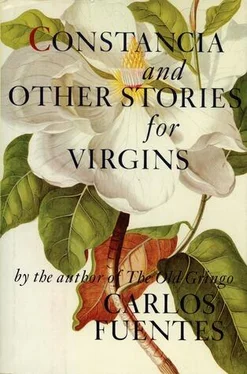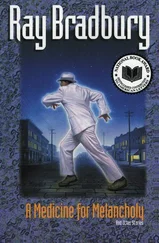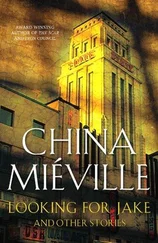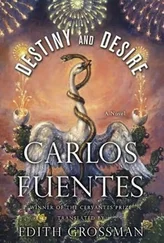One day, already ill, Santiago exclaimed: —To think that so beautiful a conception, one of the heights of Art Nouveau, has to be shut away, preserved and enshrined, as fragile as a cathedral of cards, as protected as a sand castle, ephemeral as an ice palace, within the walls of a concrete jail. It was one of the most detestable triumphs of Le Corbusier — he said dejectedly, always mixing his most intimate feelings with his professional judgments — and of Gropius: architects whom Professor Ferguson spoke of as his personal enemies. But Ferguson did not exempt the Mackintoshes from his criticism — perhaps they deserve to live on in that concrete tomb, since while they were alive they themselves treated their creation with conventional middle-class respect — look-but-don’t-touch, as if it didn’t deserve to live, as if it were destined, from the beginning, to serve only as an example.
— Bah, if that was the case, the Mackintoshes deserve their tomb, their frigid museum, he exclaimed, before reversing himself and praising them again.
Perhaps that was what was most characteristic of him: Santiago Ferguson was able to rekindle his love, and when he told his daughter, Catarina, lying there with him, the story of his return to Scotland, he insisted, let our homes be places that are really lived in, not museums but houses where love can be shared, again and again.
And when you die?
I fear that like the achievements of the magnificent Charles Rennie Mackintosh — sighed the professor, who was ill, confined to his bed — my poor accomplishments will end up encased in some museum.
No, we aren’t thinking of your work, but of its death, your death (we said, Catarina and us, the Vélez brothers, the daughter and the disciples): Had he chosen where he wanted to be buried: his final refuge?
The father and the daughter are embracing each other and he is telling her stories about houses the way other fathers tell stories about ogres, sleeping beauties, and children lost in the woods; Santiago Ferguson extrapolates a single element from all the legends — the dwelling, because he believes that we can learn to love only from what we have constructed; nature, he murmurs to his daughter, is too destructive and too often we must destroy it in order to survive; architecture, on the other hand, can only be a work of love, and love requires a haven; Mackintosh and his family, in Glasgow, didn’t understand that they made their refuge into a museum, you and I, Catarina, we keep on searching, we keep on identifying with the place that rescues us, if only for a moment, from the dilemma plaguing us from the moment we are born, exiled from the belly that gave us life, condemned to the exile that is our punishment, daughter, but is also the condition of our life, yes, Santiago, I understand, Santiago: Catarina, inside or outside, that’s the entire problem, inside you live, but if you don’t leave, you die; outside you live, but if you don’t find a refuge, you also die; entombed inside, exposed outside, ever condemned, you search for your exact place, an outside/inside that nurtures you, daughter, and protects you, father; now we are in Thomas Jefferson’s Monticello, where he is telling his daughter, the architect is saying to his daughter, come to me, my house is a belvedere, and it has mountains, woods, rocks, and rivers extending from it: the house is suspended over nature, it neither ruins it nor is ruined by it, so I call our house monte, the mount, of the cielo, the sky, daughter, an ark against the storms, a tower that enables us to look endlessly into the workshop of nature: spread before us, daughter, are the clouds, snow, hail, rain, and storms; we watch them being made: nature does not surround us, does not threaten us any longer, daughter, we are united, you and I, Santiago, in this perfect viewpoint, the refuge that contains all refuges; the world constructs itself at our feet, and when the sun appears, it seems to be born from the water, and when it reaches the top of the mountains, it gives life equally to you, to me, and to nature.
— Open the door. The boys want to come inside.
— No. They have separated. Only one of them wants to enter here.
— Where is the other one?
— Pardon me. He is also seeking entry.
— Open the door, I say. Don’t abandon anyone, daughter.
— I’m not your daughter, Santiago. It’s your lover you have invited to Monticello. The mount of heaven, the mount of Venus, he murmured, lost in love, intoxicated with sexuality, Santiago Ferguson, Monticello, Venusberg, sweet mound of love, soft slope of goddesses.
II. MIRACLES
1
He went back slowly to the elevated portion of the project. His desire to return immediately to the watchman’s shack where Heredad Mateos was stitching the bridal gown was weakened by a sense of propriety, or perhaps the weakening really came from being alone: without me.
So he stopped in our belvedere, as we sometimes called it, calmly fixed himself a cup of tea, and sat down to sip it, staring out at the project, something we had often done together, but I don’t know if he saw what I had discovered miraculously, or if everything had returned to its original state — twisted iron, broken glass, corroded structures worn away by the city’s toxins.
I want to think that, separated from me, my brother José María lost the vision that we might have been able to share, the magic vision that two people can sometimes achieve, like spotting a fleeting film image, seeing what is rarely seen though it is always there.
2
I turned away from you and walked toward the hut where the old woman was mending the bride’s gown. I took the porcelain frog that we had seen in Catarina Ferguson’s bath. You headed toward the project, into the center of the maze, remembering what Professor Santiago Ferguson had said when we parted after lunch: “You have to accept the fact that we architects want to save what can be saved, but to do that, we must know how to see, we must learn to see anew.”
— Everything conspires to keep us from seeing. Remember Poe’s story “The Purloined Letter”? Nobody can find the letter because it’s right out in the open, not hidden but in plain sight, where anyone can see it. The same thing happens to some of the most beautiful architecture in our ancient city of palaces.
You head toward something you’ve finally managed to see, in the middle of this mountain range of twisted metal; before, we looked at it without really seeing it, we saw it as one of the many constructions of our anarchic city, we saw only what concerned us: the problem of designing the public garden, caught between the practical constraints imposed by the engineers and our own indecision about what the garden should look like, what we, the Vélez brothers, José María and Carlos María, should do with the beautiful space that was entrusted to us: the space, as Professor Ferguson taught us, between what style demands and what the artist contributes.
You walk toward something you’ve finally found, an entrance, a door in a Neoclassical building, shrouded in gray stone, a severe style, but one that forces you to appreciate the nobility of the columns on either side of the main entrance, the triangular lintels over the windows without balconies, which have been covered over with gray bricks.
You ask yourself if you alone could see it, if I could not, or if I could see it, too, but let you go alone, seeing what you saw, desiring what you desired.
The windows are bricked up, the balconies closed off, and so you are afraid that the inside door will block your entrance. But your excited touch meets no resistance, nothing stops the impetus that is an extension of your will: an ardent will, as if in preparation for the cloistered fervor that you imagine in this house of zealously guarded entrances. You push the eighteenth-century entry door that appeared to you in the middle of the ruins in the heart of Mexico City. You fear what seems forbidden. You desire an image of a hospitality as warm as the welcome your teacher Ferguson always associates with Glasgow, the city of his ancestors, where a brilliant building, novel and revolutionary, by the architect Charles Rennie Mackintosh met the scandalized disapproval of Victorian society and ended up, hypocritically, entombed inside the walls of a museum.
Читать дальше












